Removing Rust From Your Shotgun
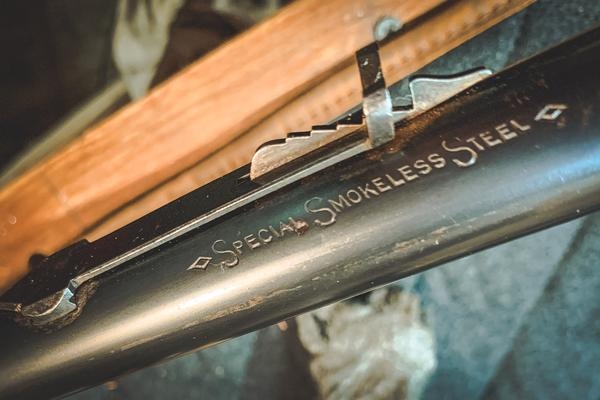
Article Sponsored by Sage & Braker Fine Gun-Cleaning Products
Removing Rust From Your Shotgun
Written by Kurtis Martonik
Rust. Every firearms owner should cringe when they hear the word. It can devalue your most prized weapon without much warning. Thankfully, it is easy to prevent if you keep your firearm properly cleaned and oiled. Instead of talking about how to prevent it, I am going to discuss how to remove rust that may have already started.
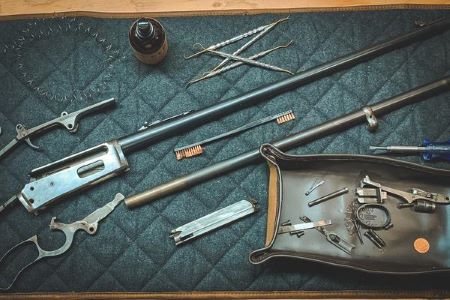
I could list off a bunch of magical chemicals and solutions that are advertised to remove rust and send you on your way. It may work or it may not. However, removing rust from firearms is a completely different animal than removing it from the wrench in your garage, and if you use the same process, you could ruin the value of your gun. Bluing is a form of rust. Therefore, you must remove rust without removing rust. Makes sense, right?
To properly and professionally get rid of rust from a firearm you need to have a good understanding of what rust is. Rust is the corrosion and oxidation of iron or steel, and is caused by being exposed to moisture and oxygen for a period of time. Here in Montana, it may take weeks for rust to form on a hunting rifle that was carried in the rain. In some of the more humid areas like the Southeast, that same exposure can cause rust to form in less than a day.
What is Gun Rust?
Rust’s chemical makeup is Fe2O3 while gun bluing’s chemical makeup is Fe3O4. Simply put, gun bluing is a black oxide coating of iron. This coating is not very corrosion resistant until it is paired with an oil. That’s a lengthy way of saying that commercial rust removers may remove your bluing as well, turning your small rust removal project into a full refinish that more than likely needs to be done by a gunsmith.
For this discussion we are going to deal with surface rust, deeply pitted metal is completely different and requires a lot more of a process than what most individuals can do at home. Deep pitting forms when the surface rust is ignored for a long period of time.
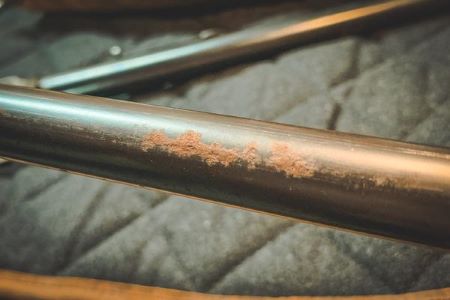
There are numerous techniques that can be used to remove surface rust from your firearm, and I’m going to walk you through a couple of the ones that I have found to work consistently. When using any of these techniques, it is important to always consider the materials that the tools you are using are made of. Specifically, their hardness and whether they will scratch the steel or finish on your gun. Copper brushes, brass picks, bronze wool, and my favorite, a penny, are all good options here.
How to Remove Rust
To start, check and make sure your chamber is clear and disassemble your firearm to a point where you can easily get at the rust you plan on removing. If it is toward the end of your barrel or somewhere easy to reach, disassembly may not be necessary. Always use correct fitting screwdrivers and reference a disassembly guide to avoid marring up your screw heads and sending springs flying across the room.
Once disassembled, hold your workpiece in a secure way; a padded vise is optimal but not necessary. We’re going to use a penny first, as this technique works best for that thick looking rust that is still on the surface. Keep in mind that this won’t make your firearm look completely new, but will remove the rust and prevent it from continuing to grow.
3 Methods of Rust Removal
1) Liberally spray CLP (Clean, Lube, Protect) on your rust and lightly go over it with the edge of a penny. Hold the penny between your pointer finger and thumb like a guitar pick and use about the same amount of pressure that you would use writing with a pencil. An orange mud will start to form which can be wiped away and the process repeated.
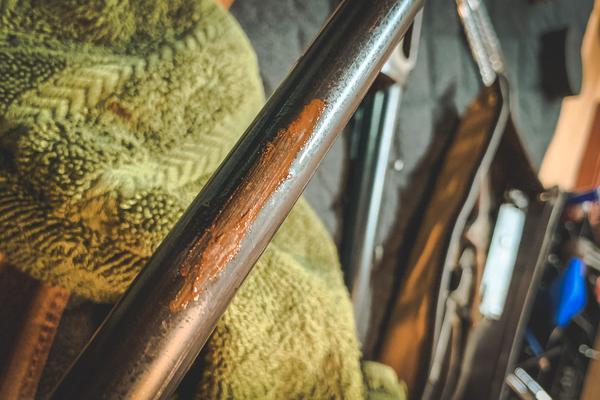
The copper streaks that you may see can be removed by going over it with a rag. If the rust has formed many years ago, there is usually a very minor amount of pitting underneath; this isn’t something to be concerned about as long as you continue to properly take care of it. The important part is that we stopped the pitting before it continued to grow.

2) The second method is using either steel or bronze wool. Fine bronze wool is preferred as it is softer than steel wool and less likely to scratch your bluing. But for this example we will be using 0000 steel wool. This method is very similar to the first, but is better used for areas of thinner rust, like the stock line on this Marlin. It is worth noting that you can go too far with this method if using steel wool, and can dull and discolor your bluing if you apply too much pressure. Once again apply CLP, this time using an amount of pressure equal to the weight of your hand and let the wool do the work.
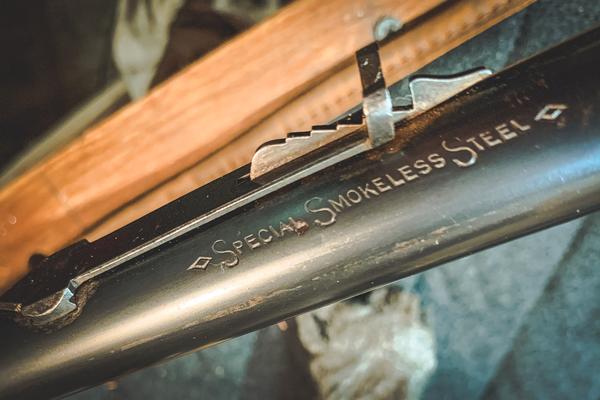
3) The last method is using brass picks. This is a great method for those hard-to-reach areas inside of a receiver or around a front sight. As before, apply CLP and lightly scratch the rust away. Just because your pick has a point on it doesn’t mean you have to use it. I find myself more often than not using the sides and backs of the picks to get the results I want. A lot of what looks like corrosion inside of a receiver, could be dried up oil and dirt. Either way this should be removed to allow the oil to get to the metal and do its job protecting the surface.

Extra care must be taken if you notice rust forming in your bore, but the principles are the same. Apply your favorite solvent to a patch and run it through the bore. Let it sit for about 15 minutes and then run your cleaning brush through the bore repeatedly. Run a few dry patches through and repeat until you have the results you want. This may take longer than the same treatment on the outside of your firearm, but is worth the effort in preventing it from getting worse and potentially affecting your accuracy.
These are three ways that I regularly use to remove rust on firearms that come across my bench. There are absolutely other methods of doing this; however, these are some of the most effective methods out there. None of these methods take much time and can be worked into your annual cleaning cycles of your working guns to have them operate smoothly for years to come.
Kurtis Martonik is a Gunsmith/Stockmaker at C. Sharps Arms.
Useful resources

Kurtis Martonik is a Gunsmith/Stockmaker at C. Sharps Arms.


Comments